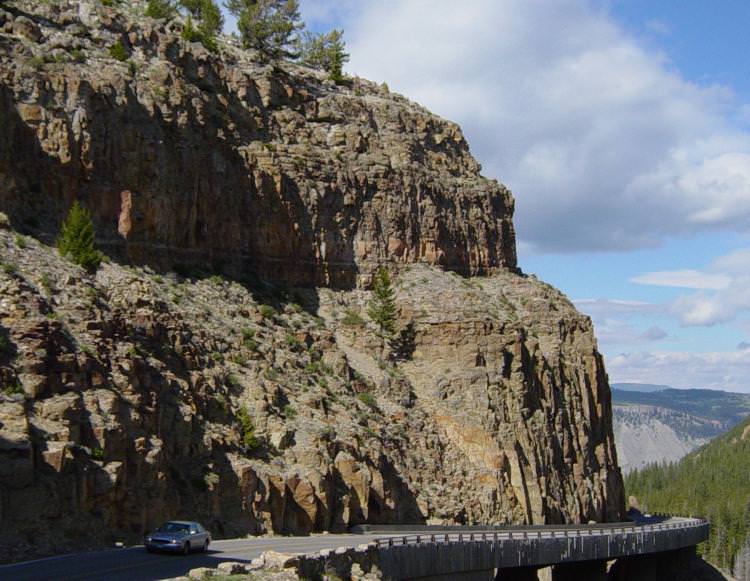[/caption]
Millions of people visit Yellowstone National Park every year, but how many think about the fact that they’re standing on top of one of the largest volcano calderas on Earth? Within the last 17 million years, there have been more than 100 large eruptions within the Yellowstone caldera, and thousands of smaller lava flows and steam explosions. In fact, the last great Yellowstone eruption happened about 70,000 years ago, and it only seems like a matter of time before it all happens again. Don’t panic, though, geologists monitor Yellowstone carefully, and they don’t think any large eruptions will happen soon.
The Yellowstone calderas measures 55 km wide by 72 km long, and rises to an elevation of 3,142 meters at its tallest point – Mount Sheridan. The constant uprise of the region created a plateau where there used to be a mountain range. These eruptions and uplift helped create the eastern Snake River Plain.
In the last 17 million years, there have been 142 caldera-forming eruptions in Yellowstone. This is an eruption large enough that a significant amount of lava, ash or rock were released – usually as an explosive eruption. Three of these eruptions have been classified as “super eruptions”, where up to 2,500 cubic km of ash and rock exploded out of the volcano. Just for comparison, Mount St. Helens, which erupted in 1980, only released 1 cubic km of material… so 2,500 times that in a single eruption. One of these super eruptions would have devastated most of North America, and cooled the climate of planet Earth for decades. The oldest of these Yellowstone eruptions happened 2.1 million years ago, which created the Huckleberry Ridge Tuff. The next oldest happened 1.3 million years ago, and the most recent super eruption happened about 640,000 years ago.
And since that last super eruption, there have been numerous smaller (but still powerful eruptions) non-explosive eruptions. The most recent lava flow has been estimated to have occurred about 70,000 years ago, and a steam explosion created a 5-km crater 13,800 years ago. The only eruptions that happen at Yellowstone today are the numerous geothermal vents around the caldera. These mix with water to create the famous geysers, like Old Faithful. These geysers indicate that Yellowstone is still a very active region, and more eruptions are likely.
Geologists are continuing to monitor the Yellowstone caldera, including the speed at this the caldera floor is rising up. Like Hawaii, Yellowstone is created by a single volcanic hotspot located under the Earth. The North American Plate is slowly moving over top of the hotspot, creating a long chain of calderas. The current caldera in Wyoming is the current location of the hotspot. Geologists have measured that the caldera floor is rising upwards at almost 7 cm per year. Fortunately, they find no evidence that we’re due for another super Yellowstone eruption. Of course, these things are difficult to predict.
We have written many articles about volcanoes for Universe Today. Here’s an article about about a Yellowstone-like formation on Mars, and an article about how extreme life in Yellowstone might offer hope for the search for life on Mars.
Want more resources on the Earth? Here’s a link to NASA’s Human Spaceflight page, and here’s NASA’s Visible Earth.
We have also recorded an episode of Astronomy Cast about Earth, as part of our tour through the Solar System – Episode 51: Earth.
Source: Wikipedia

